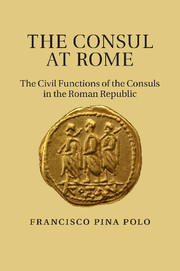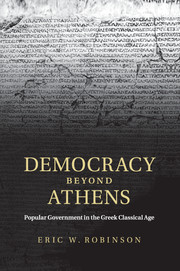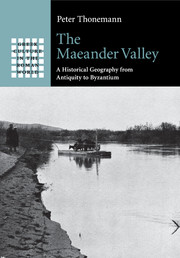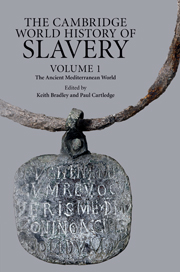Refine search
Actions for selected content:
23990 results in Ancient history
Chapter 4 - ‘The gifts of the gods’
-
- Book:
- Greece and the Augustan Cultural Revolution
- Published online:
- 05 November 2011
- Print publication:
- 03 November 2011, pp 142-206
-
- Chapter
- Export citation
Chapter 3 - ‘The noblest actions of the Greeks’
-
- Book:
- Greece and the Augustan Cultural Revolution
- Published online:
- 05 November 2011
- Print publication:
- 03 November 2011, pp 103-141
-
- Chapter
- Export citation
Index
-
- Book:
- Greece and the Augustan Cultural Revolution
- Published online:
- 05 November 2011
- Print publication:
- 03 November 2011, pp 309-319
-
- Chapter
- Export citation
Chapter 1 - Introduction
-
- Book:
- Greece and the Augustan Cultural Revolution
- Published online:
- 05 November 2011
- Print publication:
- 03 November 2011, pp 1-58
-
- Chapter
- Export citation
Frontmatter
-
- Book:
- Greece and the Augustan Cultural Revolution
- Published online:
- 05 November 2011
- Print publication:
- 03 November 2011, pp i-iv
-
- Chapter
- Export citation
Illustrations
-
- Book:
- Greece and the Augustan Cultural Revolution
- Published online:
- 05 November 2011
- Print publication:
- 03 November 2011, pp vi-vi
-
- Chapter
- Export citation
Chapter 2 - ‘Athenian eloquence and Spartan arms’
-
- Book:
- Greece and the Augustan Cultural Revolution
- Published online:
- 05 November 2011
- Print publication:
- 03 November 2011, pp 59-102
-
- Chapter
- Export citation
Chapter 5 - ‘Constructed beauty’
-
- Book:
- Greece and the Augustan Cultural Revolution
- Published online:
- 05 November 2011
- Print publication:
- 03 November 2011, pp 207-232
-
- Chapter
- Export citation

The Consul at Rome
- The Civil Functions of the Consuls in the Roman Republic
-
- Published online:
- 25 October 2011
- Print publication:
- 24 February 2011

The History of Greece
-
- Published online:
- 07 October 2011
- Print publication:
- 07 July 2011
- First published in:
- 1870

Familia Caesaris
- A Social Study of the Emperor's Freedmen and Slaves
-
- Published online:
- 07 October 2011
- Print publication:
- 07 September 1972

Democracy beyond Athens
- Popular Government in the Greek Classical Age
-
- Published online:
- 07 October 2011
- Print publication:
- 22 September 2011

The Maeander Valley
- A Historical Geography from Antiquity to Byzantium
-
- Published online:
- 07 October 2011
- Print publication:
- 22 September 2011

Themis
- A Study of the Social Origins of Greek Religion
-
- Published online:
- 07 October 2011
- Print publication:
- 24 June 2010
- First published in:
- 1912

Roman Republican Coinage
-
- Published online:
- 07 October 2011
- Print publication:
- 20 March 1975

The Cambridge World History of Slavery
-
- Published online:
- 28 September 2011
- Print publication:
- 07 March 2011

The Cambridge World History of Slavery
-
- Published online:
- 28 September 2011
- Print publication:
- 25 July 2011
Chapter 5 - The nature of Classical democracy outside Athens
-
- Book:
- Democracy beyond Athens
- Published online:
- 07 October 2011
- Print publication:
- 22 September 2011, pp 217-247
-
- Chapter
- Export citation
Chapter 1 - Classical demokratiai on the Greek mainland (central Greece and the Peloponnese)
-
- Book:
- Democracy beyond Athens
- Published online:
- 07 October 2011
- Print publication:
- 22 September 2011, pp 6-66
-
- Chapter
- Export citation
Maps and Figures
-
- Book:
- The Maeander Valley
- Published online:
- 07 October 2011
- Print publication:
- 22 September 2011, pp vi-xii
-
- Chapter
- Export citation
